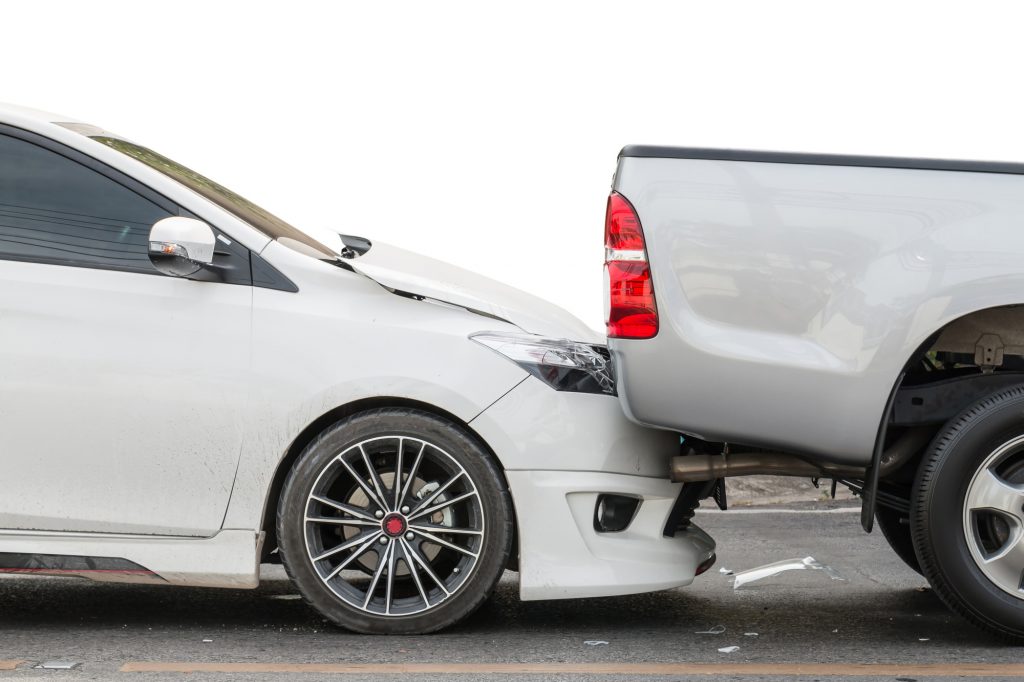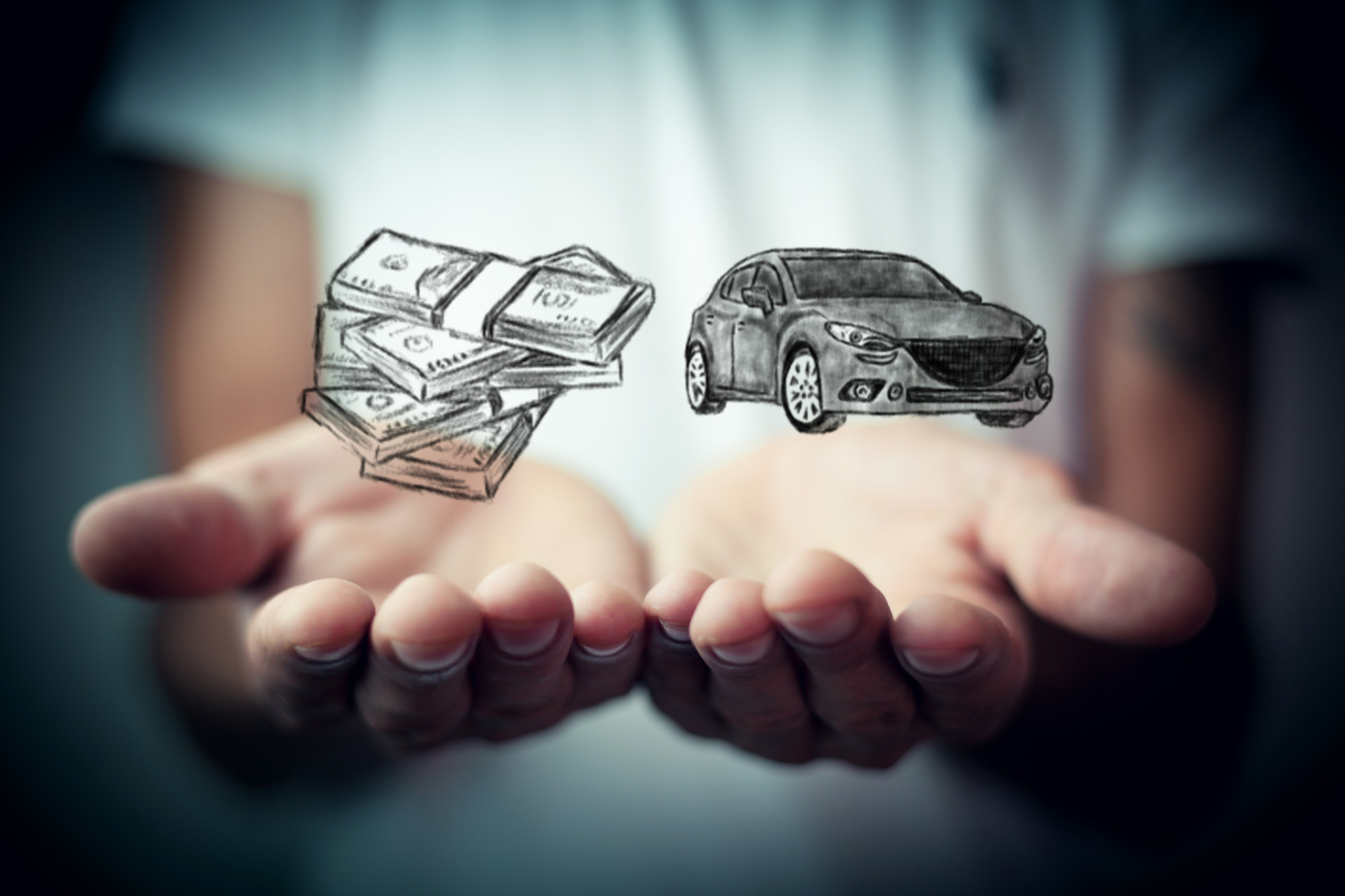
Sorry, Tracy Morgan, I was on the phone!
A distracted Honda driver was talking on the phone when they ran into celebrity Tracy Morgan’s $2 million Bugatti. To make matters worse, Tracy had just picked up the luxury sports car from the dealership only half an hour earlier.
If you’ve ever wondered, “What happens if I’m at fault in a car accident”, you’re in the right place. We’ve created a short guide highlighting everything you need to know post-car crash. So take a look and find the car accident answers you’ve been looking for!
Steps to Take After a Car Accident
You might think you’re at fault for a car accident, however, it can be difficult to tell at the accident scene. No matter what the situation is, there are specific steps you should take following a car crash.
Here’s what to do in a car accident:
- Call 911
- Exchange car insurance information
- Take photos
- Gather witness information
- Contact your insurance company
Now that you know the steps you should do after an accident, let’s review what NOT to do.
Don’t Negotiate With Other Driver
It can be tempting to want to negotiate with the other driver when there’s a minor accident and there are no apparent injuries. However, while negotiating may seem like an appealing idea, it can have negative consequences down the road.
For instance, let’s say you think you’re at fault in a fender bender. The damages are mild, and nobody’s hurt. You decide to negotiate with the other driver and agree to pay a certain price for the damages.
However, 3 weeks later, it turns out the driver has contacted your insurance company. Now they’re filing a fraudulent claim against you, even though you already paid the agreed-upon amount! Since your negotiation with the other driver wasn’t a legally binding contract, you’ll have no way to defend yourself.
Never Leave the Accident Scene Prematurely
Moving on, you should never leave the accident scene until everything is in place. Leaving the scene prematurely could cause you legal problems, as well as difficulties with your insurance claim.
Did you or the other driver call the police? Even if it’s taking a long time, wait for the officers to arrive. Also, be sure to get an accident report number from the officers.
If there’s no injuries or damages, you and the other driver may choose to forego calling the police. However, you’ll still want to finish exchanging insurance information with the other driver before leaving.
Never Admit Guilt
Finally, never admit guilt about the accident, at any time. Sure, you may think you know the accident is your fault. However, you shouldn’t share that opinion with police officers or insurance companies.
There’s a precise process both police and insurance companies used to determine fault. Since you’re not an expert at determining fault, don’t choose now as the time to try and become one.
Instead, always avoid admitting fault at the accident scene. You can tell the police officers the facts, but don’t apologize for anything. Don’t even say you’re sorry for the inconvenience. If you apologize in any way, officers could see it as an admission of guilt.
How Is Fault Determined in a Car Accident?
The police report will be a big deciding factor in determining who caused the accident. This is because the police report is an official version of the events that took place, making it more reliable than witness testimony.
After the police report, insurance companies are going to look at the evidence you gather. This will include any photographs you took from the scene, as well as testimony from witnesses.
When the insurance company is ready to assign fault, they will do it using a percentage basis. It’s possible that even if you’re at fault for the accident, they will still assign a portion of the faults to the other driver. To answer the question, “what happens if I’m at fault in a car accident”, you’ll need to know your fault percentage.
For instance, the insurance company may determine that you are only 70% responsible for the car accident. If the other driver has a claim for $100,000 in damages, you would only be responsible for 70% of the damages, or $70,000.
What Happens If I’m at Fault in a Car Accident?
Do you live in a no-fault state? No-fault insurance covers you and your passenger’s medical payments, no matter who’s at fault for the accident.
Another word used for no-fault insurance is personal injury protection or PIP insurance. Not every state offers PIP, while some states make it a mandatory requirement.
Here’s a shortlist of what no-fault insurance will cover:
- Health insurance deductible
- Expenses that exceed health insurance coverage amount
- Lost income
- Funeral expenses
- Essential services
Personal injury protection usually has a coverage limit. The coverage limit is a total amount the insurance company will pay for a claim.
If you’re involved in a serious car accident, likely, the other driver’s PIP won’t cover all of their medical bills. When no-fault insurance isn’t able to cover all of the medical bills, liability insurance comes into play.
How Liability Coverage Works
Liability is what pays for the other driver’s damages, including property damage and bodily injury. Bodily injury relates to any medical expenses that resulted from the accident. Property damage relates to any damage that happened to the vehicle you hit.
How Collision Coverage Works
Your collision coverage pays for damages to your vehicle during an at-fault accident. Collision coverage isn’t a mandatory part of insurance.
If you do have collision coverage, you’ll still have to pay the deductible before the coverage kicks in. The deductible is a predetermined amount you agreed on when you started the policy.
Get Back on the Road
Next time you’re wondering, “what happens if I’m at fault in a car accident”, you’ll know the answer. By keeping your cool, and sticking to the facts, you’ll be able to get back on the road in no time.
For more ways to keep your life on track, check out the rest of this site.




